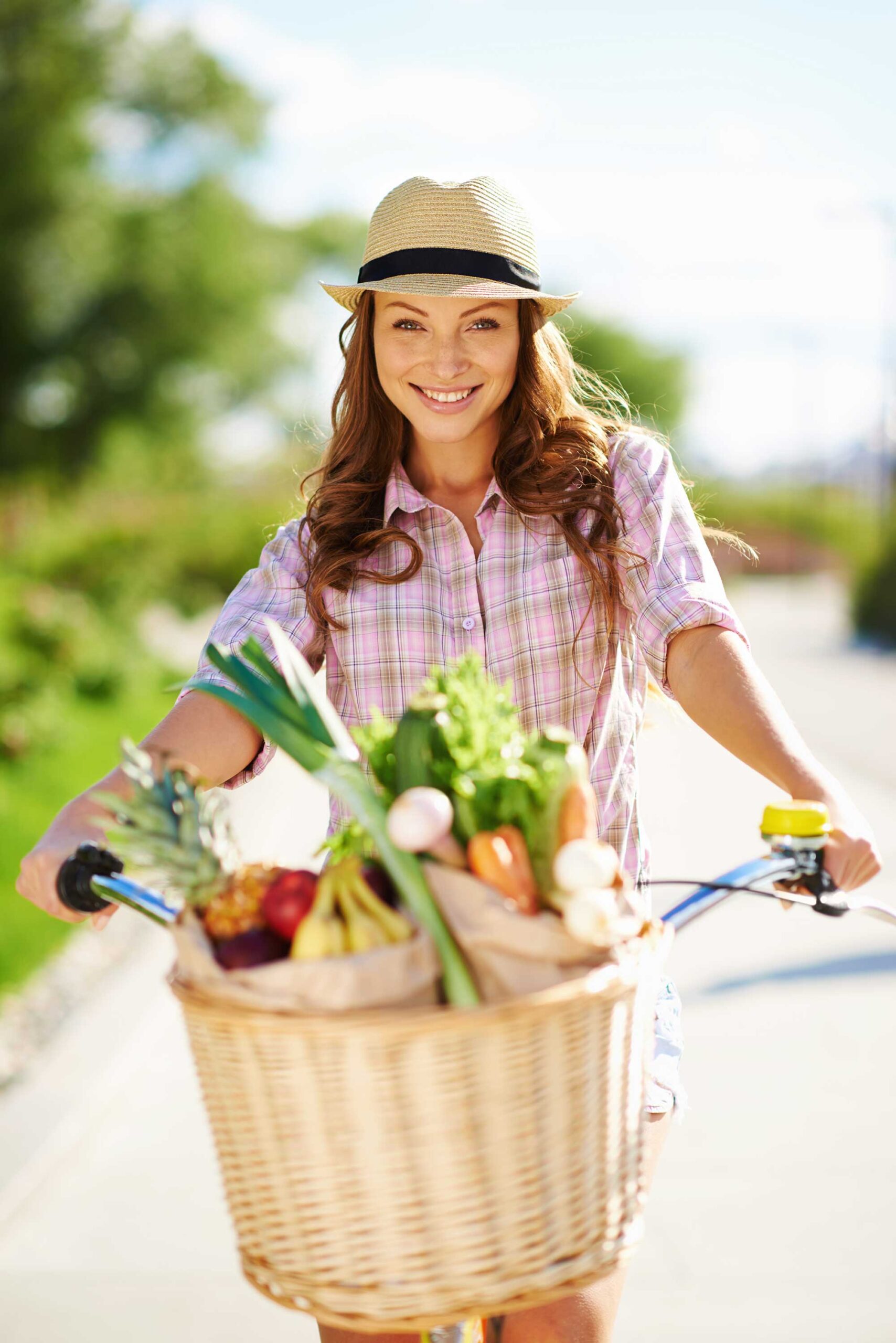Dieting type: the thinker
You tend to overthink things, which leads to stress and mood swings, and those emotions can derail your attempts to adopt healthy eating patterns.
“Thinkers also tend to be self-critical and sensitive to failure,” says Golley. “As perfectionists, it’s common for Thinkers to feel ‘If I can’t do it 100 per cent right, I won’t do it at all.’”
Try
• Focusing on your little wins. “Rather than concentrating on the things you ‘fail’ at, celebrate what you do well, instead,” says Golley. At the end of each day, write down all the things that went to plan, whether that’s eating five serves of vegetables, choosing a healthy lunch or saying ‘no thanks’ to seconds at dinner. “It helps you realise that you don’t have to be perfect to make progress.”
• ‘Graphing’ your weight loss. Weigh yourself once a week and plot the results on a graph. While weekly weigh-ins are linked to more successful weight loss, viewing your progress on a graph can spur you on to keep going, and helps you realise small slip-ups don’t matter in the overall scheme of things.
• Taking a probiotic. Ones that contain the Bifidobacterium longum strain can help to reduce stress by making the gut bacteria that sends mood-related signals
to the brain healthier.
Dieting type: the craver

You don’t have to be hungry to feel like eating something – the sight and smell of a food is enough to lead to overeating in a variety of ‘tricky’ situations.
“As well as food-based triggers, emotions also tend to push The Cravers’ buttons. Plus, Cravers can be overly strict when they’re dieting, in an attempt to curb their cravings.”
Try
• Buying individually wrapped ‘treats’. Banning certain foods only makes you crave them more, so stock up on portion-controlled versions instead. You’ll eat significantly less of something when it’s visually divided into individual serves, say US researchers.
• Getting enough sleep. A lack of shut-eye bumps up food intake in people who are susceptible to emotional eating. Feeling tired also changes the type of food you crave, so junk food, like doughnuts and pizza, suddenly becomes more appealing. Make getting at least seven hours’ sleep a night a priority.
• Going for a 15-minute walk. A short burst of physical activity makes more blood sugar available to your brain, a surge that makes it easier to resist the food you’re craving.

Dieting type: the foodie
You feel like food is on your mind 24/7 – you love making it, eating it and experiencing it.
“Foodies love exploring new tastes and food trends,” says Golley. “For a Foodie, food isn’t just fuel and they often find themselves getting lost in reading recipes and cookbooks.”
Not only can that lead to eating too many kilojoules, but diets can also seem boring, repetitive and stifling for Foodies.
Try
• The every-other-day diet. Known as alternate-day fasting, every other day you skip breakfast and dinner and ‘spend’ 2000kJ on lunch. On non-fast days you eat normally, which allows you the freedom to indulge. It produces a variety of health benefits, including lower cholesterol and blood pressure, as well as weight loss.
• Cooking a new vegetarian recipe once a week. As well as satisfying your love of experimenting with new recipes, research proves a link between going vegetarian semi-regularly with a lower overall intake of kilojoules.
• Focusing on healthy food trends. So less cronuts, more zoodles (noodles made from zucchini).
“Trends like zoodles are perfect for Foodies,” says Golley. “They’re healthy and nutritious, but still deliver that ‘on-trend’ hit that Foodies crave.”

Dieting type: the socialiser
You won’t let strict food restrictions stifle your social life.
“For the Socialiser, connecting with friends and family is key, and more often than not, eating and drinking is a big part of catching up with people,” says Golley.
“But when you eat out a lot, it can be harder to make healthy food choices and keep the kilojoule count down.”
Try
• Being strategic when you order food. Peer pressure influences what you choose from a menu, so if you’re dining with friends who are health-conscious, let them order first – if they pick the salad, you’re more likely to as well. Alternatively, order first so you’re not swayed when a friend makes a less healthy choice.
• Standing as far away from the food as possible. You’ll eat 27 per cent less, compared to positioning yourself somewhere with food in easy reach. When food is further away, we overestimate how much we’ve eaten, which makes going back for more less likely.
• Putting a healthy option on your plate first. You’ll not only eat the most of what you serve first, but that choice influences what you take next from the food on offer at a party or on the dinner table. So make your first selection a healthy one.

Dieting type: the free-wheeler
You live in the moment – your motto is more ‘spontaneous and impulsive’ rather than planned. “Freewheelers make food choices in the here and now, rather than thinking about and planning for them beforehand,” says Golley.
“So, while Freewheelers might see the value in structured meal plans, they struggle to incorporate them because they get bored quickly and find it difficult to stay focused on their long-term goals.”
Try
• Thinking one or two days ahead. “While sticking to a week-long meal plan is too difficult, try sticking to one that covers off just one or two days at a time,” says Golley, as there’s a clear link between meal plans and better weight loss. “Reward yourself with something small whenever you manage to do it.”
• Freezing a selection of healthy meals. “Divide them up into portion-sized serves so you can still be spontaneous rather than having to plan your meals days in advance, but you know that whatever you reach for each day is a healthy choice,” says Golley.
• Avoiding the grocery shop when you’re hungry. There’s nothing wrong with planning meals and shopping for ingredients on a day-to-day basis – but if you do it when you’re hungry, you’ll buy 19 per cent more food, and 31 per cent more high-kilojoule snacks. Try shopping just after you’ve eaten and take a shopping list with you.

